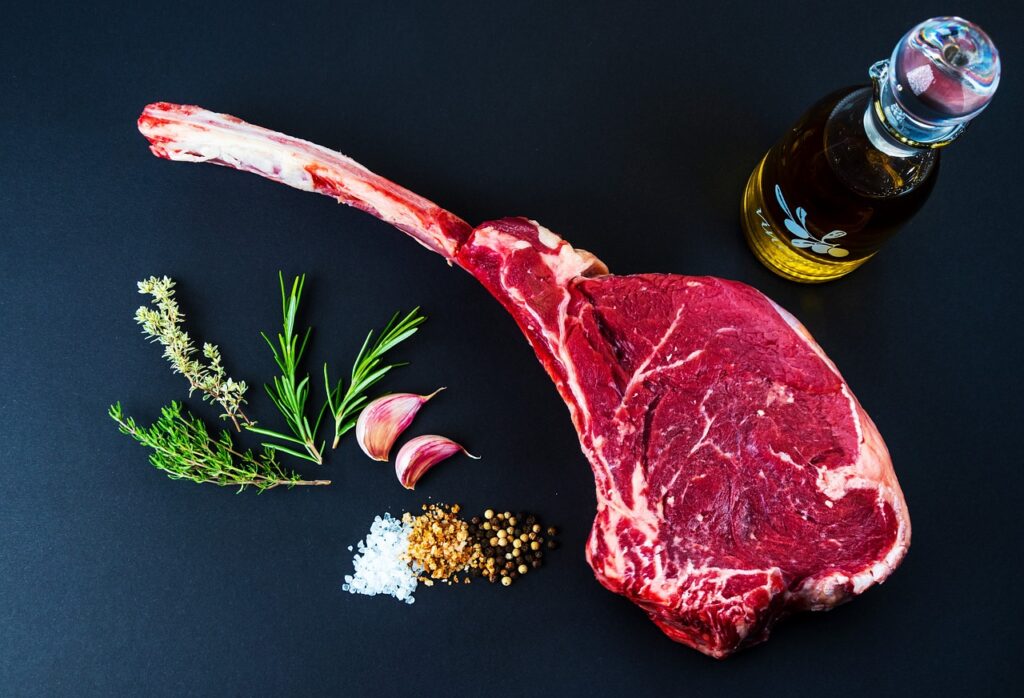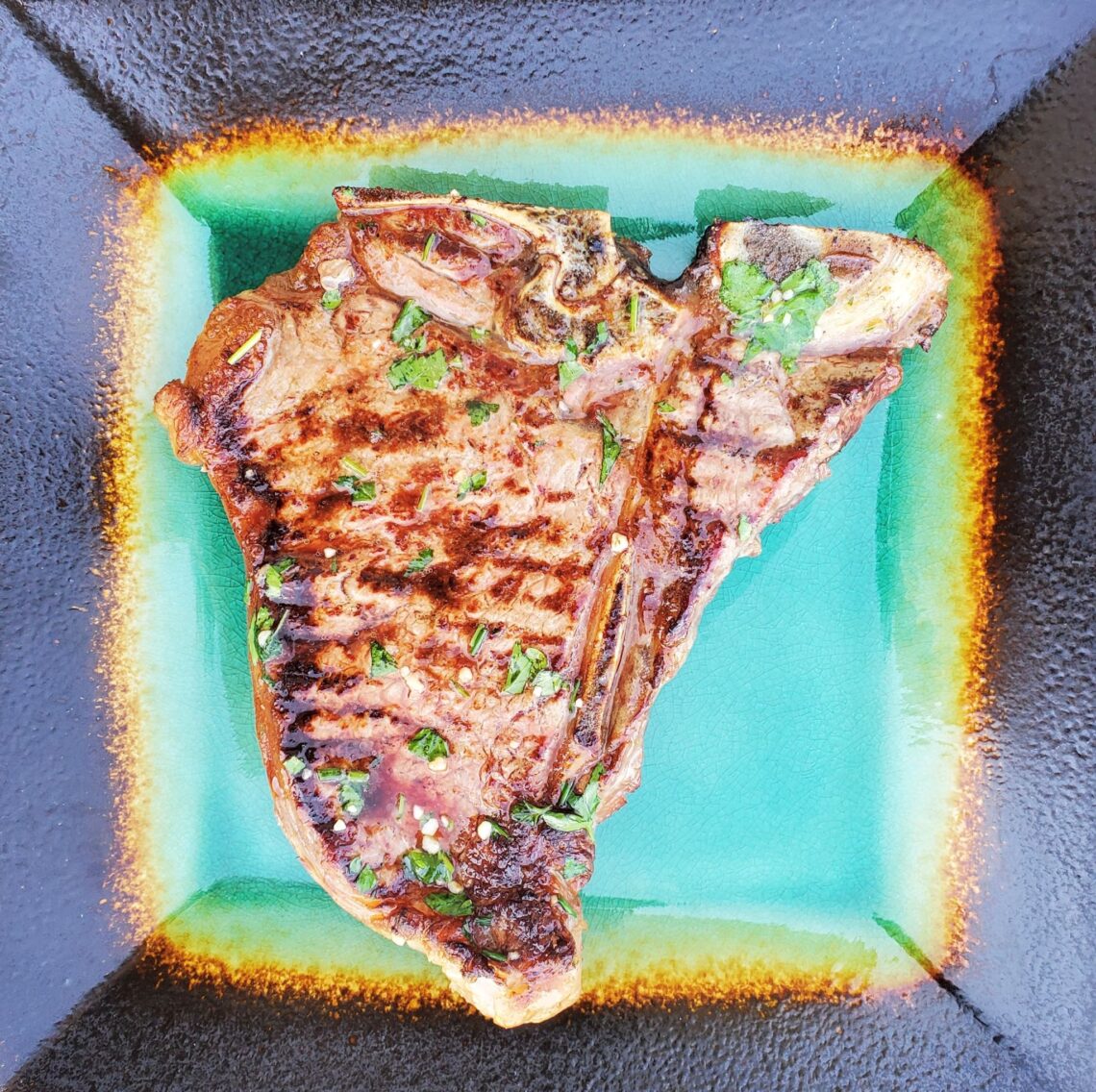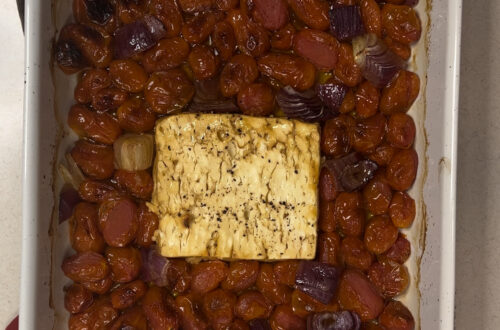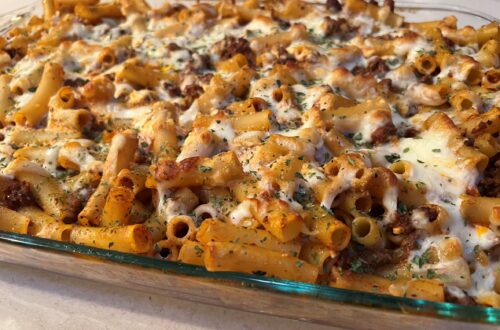Ever wondered which cut of steak is best, or how to pick the best steak? Read further for a breakdown of each of the common (and a few not-so-common) cuts of steak to help you decide which cut is best for you!
Table of Contents:
- Filet Mignon (or Tenderloin Steak)
- Ribeye Steak
- Strip Steak
- T-Bone Steak
- Hangar Steak
- Flank Steak
- Skirt Steak
- Top Sirloin Steak
- Tomahawk Steak
- Denver Steak
Filet Mignon or Tenderloin Steak
Filet mignon, also known as tenderloin steak, is a very popular choice due to its melt-in-your-mouth tenderness. It’s a lean cut from the midsection of the cow that has vey little connective tissue or fat. Because of this, filet is not quite as flavorful as fattier cuts of steak, but is incredibly buttery-soft and tender. Filet is a pricier cut that is often featured in high-end restaurants as a special.

Filet mignon is an excellent choice for date night or any time you want to splurge on an extra tender and tasty steak. For delicious results, cook your tenderloin steak in a cast iron skillet over high heat for a couple minutes on each side, being sure to toss in some butter, herbs, and garlic to baste the steak once it’s about half done. Allow your filet to rest for the same amount of time it took to cook, then enjoy!
Ribeye Steak
Ribeye is a fatty cut of steak from the rib section of the cow that is an incredibly popular choice for steak lovers due to its unmatched fat marbling and flavor. It’s also a forgiving cut of meat that can hold up to a fair amount of over-cooking before becoming tough. You can get ribeye steaks with or without the bone, but cooking the meat on the bone is a great way to infuse even more flavor into the steak.

A ribeye steak is an excellent choice for just about anyone who’s looking for a bold, rich and delicious steak that’s simple to cook and super tender and tasty on the palate. It’s an especially great cut for grilling: just salt your steak, grill it over hot flames for a few minutes on each side until desired temperature or “doneness,” then allow it a few minutes to rest before you dive in.
Strip Steak
Strip steak, commonly known by the names New York strip steak (boneless) or Kansas City strip steak (bone-in) are a common choice for steakhouses and are a delicious choice for grilling. Strip steaks aren’t quite as richly marbled as a ribeye, but they have a thick stripe of fat on the edge that can be rendered during cooking for extra flavor.

Anyone looking for a classic steak will enjoy a strip steak hot off the skillet: just salt your steak, cook it in a high-heat oil in a hot cast iron skillet for a few minutes on each side until desired temperature or “doneness,” then allow it a few minutes to rest before you dive in. Be sure to place that thick layer of fat on the edge of the steak directly into the bottom of the cast iron skillet and allow the heat to render some of the fat; this will ensure that some of the fat infuses back into your meat and gives it rich flavor.
T-Bone Steak
T-Bone steaks are a cut of steak that combines the tenderloin and strip steak into one delectable cut of meat with a T-shaped bone in the middle. In case you’re wondering, a porterhouse steak is the same as a T-Bone steak except that a porterhouse is required to be at least 1.25 inches thick from the bone to the widest point on the filet.

It’s hard to cook a T-Bone steak properly due to the variation of fat content throughout, so it may not be the best option for beginners. To cook a juicy and delicious T-Bone, be sure to sear all the sides and edges of the steak on a grill or in a pan and then transfer to the oven to finish cooking until it reaches your desired temperature or “doneness.”
Hangar Steak
A hangar steak, otherwise known as hanging tenderloin or butcher’s steak, is a steak loved by many for its rich flavor. Butchers have been known to keep the hangar steak for themselves rather than selling it in their shop, hence the title “butcher’s steak.” The diaphragm muscle of the cow is generally divided into two separate cuts, one of those being the hangar steak and the other being the outer skirt steak. The hangar cut is generally agreed to be the next most tender cut of meat next to filet mignon but is characterized by a long strip of inedible membrane that runs down the middle.

Hangar steak has an almost ridged texture that makes it great for soaking up marinades. To cook, sear it quickly over high heat; hangar steak is lean and easily overcooked which can make it tough.
Flank Steak
Flank steak, called Bavette by some, is a tender cut from the rear abdominal muscle of a cow. It looks similar to a skirt steak but thicker and more of a clear-cut rectangle shape. It has a chewier texture than the more tender cuts and requires careful cooking.

When cooking flank steak avoid cooking past a medium-doneness or you may end up with tough meat. Try searing the flank steak quickly on each side and then let it rest for a few minutes before cutting against the grain.
Skirt Steak
Skirt steak is cut from the belly area of the cow and is similar in texture to the flank steak with a deep grain and a somewhat chewy texture. A thin membrane covers the outside of the muscle which is generally trimmed and removed before cooking.

While skirt steak is a bit chewy for most, it’s a great choice to use in dishes like tacos or fajitas where the meat is marinated and then quickly seared over high heat.
Top Sirloin Steak
The top sirloin is a lean yet tender cut of the sirloin that makes a great steak for frying or grilling. It’s generally less expensive than other types of steak, but with proper searing and cooking it makes a delicious standalone steak.

To cook a top sirloin steak, sear each side for a few minutes each over high heat until it reaches your desired temperature and “doneness”, then allow it to rest before slicing against the grain.
Tomahawk Steak

Tomahawk steaks are a showy cut of steak that is actually the ribeye with a long length of the rib bone still attached. As a general rule, more fat and bone equals more flavor so this steak has it all. If you’re feeling especially barbaric you can skip forks and knives altogether and use the bone as a handle.
A tomahawk steak can be a little trickier to cook than a regular ribeye because of the unwieldy shape, but with a little patience it’s definitely worth it for that mouth-watering flavor. Try searing it on all sides (being sure to sear it from all angles including the bone) and then allowing it to rest for a few minutes. As with any steak that’s on the thicker side you can finish it in the oven after searing if it’s not cooked through enough; just have a thermometer handy to check the temperature so it doesn’t get overcooked.
Denver Steak
The Denver steak is a relatively new cut of steak that is on the rise in popularity for it’s succulent tenderness and fat marbling. This cut is taken from the shoulder area of the cow called the “beef chuck” which is normally known for being a tough piece of meat, however the Denver steak is cut from the part of the shoulder that does the least movement making it a flavorful yet still tender cut.

Cooking a Denver steak is fairly forgiving due to the fat marbling throughout. I recommend cooking the Denver steak the same way I might cook a ribeye: just salt your steak, grill it over hot flames for a few minutes on each side until desired temperature or “doneness,” then allow it a few minutes to rest before you dive in.







Thanks for explaining these cuts of beef as I have a tendency to stay with familiar cuts. This will help to put more options on the table.